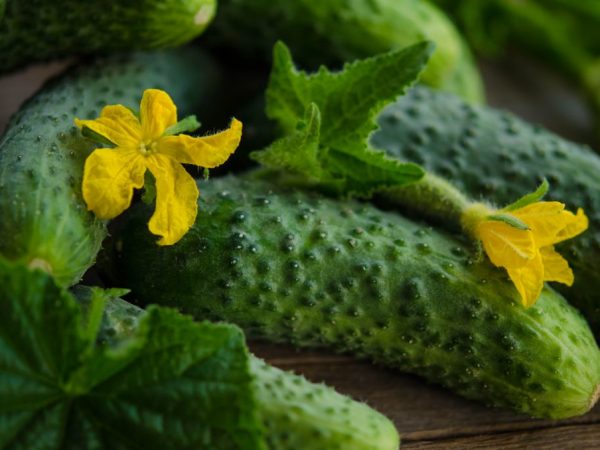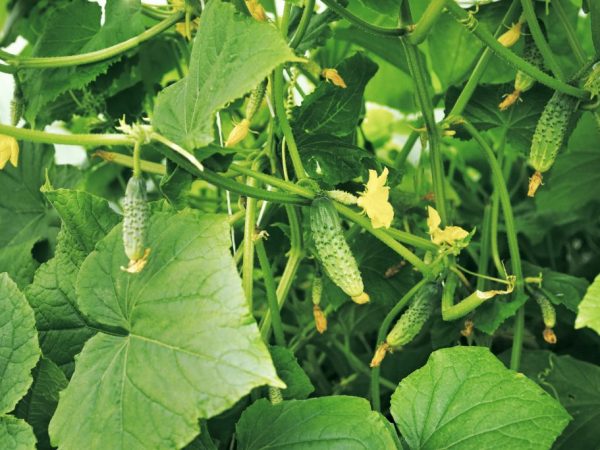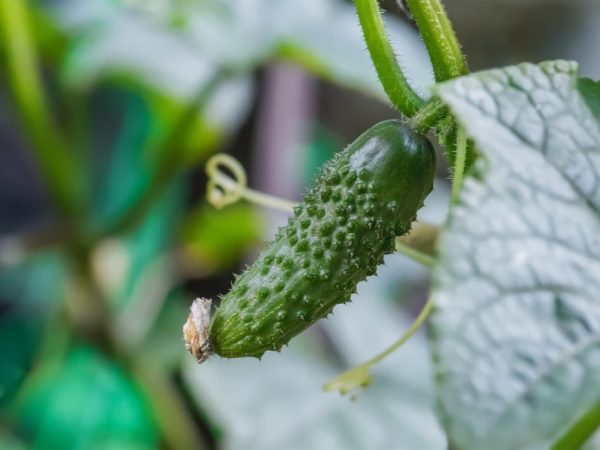Description of productive varieties of cucumbers
A large number of varieties of cucumbers are known that ripen at different times: at the beginning, middle and end of summer. The green vegetable is grown in open and closed ground, there are also separate hybrids for this. The summer resident faces a difficult task: to choose from a variety of delicious and fruitful varieties of cucumbers.

Description of productive varieties of cucumbers
Main selection criteria
Cucumber varieties are divided into those requiring pollination and self-pollinating. Cucumbers that have male and female flowers will require bees to bear fruit. Varieties in which heterosexual flowers are present on the same plant are considered to be more productive. They are not so much dependent on the vagaries of the weather and the departure of insects.
There are hybrid cucumbers that do not require pollination (parthenocarpic), in which seeds do not form. True self-pollinated zelents have them.
Fruits of early varieties are intended for human consumption: their pulp is tender, juicy, the skin is thin, with a few tubercles. Cucumbers, which ripen in the middle and late summer, are more versatile: they can be eaten and canned.
Open field cucumbers
For planting in the beds, it is necessary to select the most productive varieties of cucumbers that can withstand the vagaries of the weather characteristic of the area.
Early ripening
Christina
Christina F1 belongs to the superearly yielding varieties of cucumbers. Seedlings are planted in the beds after the soil has warmed up to 12 ° C in central Russia. The advantages of the variety include resistance to viruses, prolonged drops in temperature and other vagaries of the weather characteristic of recent years.
Christina's whips are of medium length, the greens are collected in a brush. The first cucumbers appear 40-45 days after sprouting. A distinctive feature is generous and abundant fruiting.
Ajax
The early hybrid variety is Ajax F1. Cucumbers up to 11 cm long, bright green color, are formed within a month after germination. The variety has a high yield, the fruits are formed in several pieces in the nodes. Zelentsy can be eaten fresh, preserved, salted. A distinctive feature is the rapid growth and formation of the bush.
Quadrille
The high-yielding variety Kadril F1, which is resistant to frost and diseases, is considered to be very early. The first cucumbers appear 1.5 months after planting. The square dance is a self-pollinated hybrid that produces greens with a delicate taste and thin skin.
Madam
The early table varieties include Madame, whose greens appear 45-48 days after planting. Small cucumbers up to 80 g in weight grow in bunches of 5-7 pieces, do not taste bitter, differ in thin skin, small tubercles, can be used for pickling.
Vyaznikovsky

The fruits are delicious fresh
The tested old Russian variety Vyaznikovsky is considered to be medium early: zelents appear 2 months after the moment of planting. The fruits are long, 9-11 cm. The Vyaznikovsky cucumber is versatile, well canned and tasty fresh.
Competitor
Domestic variety, medium early, productive, intended for canning and salting. are the cucumber Competitor. Its fruits are large, can grow up to 120-140 g. Zelentsy appear after 55 days, suitable for canning.
Bush
Kustovoy belongs to the medium-early high-yielding varieties. The fruits are medium in size, 110 g each, ideal for canning. The first greens appear 2 months after the sprouts appear. The variety is suitable for garden beds, greenhouses and greenhouses.
Popular hybrids Muromsky, Ekol, Courage are common high-yielding early varieties.
Mid-season
Cucumber Rodnichok is well known to vegetable growers in Russia and Ukraine. It belongs to the varieties of the average ripening period, the first cucumbers appear 60 days after germination. The zelents are cylindrical, 13 cm long, the weight of the cucumber is 110 g.
From 1 sq. m of beds are harvested up to 16 kg of cucumbers. A noticeable disadvantage of Rodnichka is the rapid wilting of zelents: their shelf life does not exceed 48 hours. Gardeners recommend forming bushes on trellises.
Mid-season new varieties of hybrids differ in yield:
- Lord F1. Its greens are small, up to 11 cm long, for universal use. The variety is resistant to diseases, requires natural pollination.
- Marinda F1. It is a high-yielding variety with small dark greens. Zelentov weight - up to 80 mm, per 1 sq. m yield reaches 30 kg. A distinctive feature of cucumbers is dense elastic flesh, they are best used for canning.
Late

Fruits of late varieties are versatile in use
Phoenix 640 belongs to the later ones; insects are required for pollination. Long-term storage zelents, differ in large tubercles, are free of bitterness. Phoenix is resistant to diseases, suitable for canning and salting, fresh consumption. The variety bears fruit before frost, it is recommended for planting in arid regions.
Indoor varieties
Greenhouse cucumbers are considered by many to be harmful due to the large amount of nitrates, but with proper agricultural technology and top dressing, the greens obtained from high-yield varieties of cucumbers are absolutely no different from those grown in the garden.
Zozulya
The early ones include the Zozul hybrid, which does not require pollination (certified in the 80s of the last century), the first fruits appear on the lashes after 45-50 days. Zelenets is long, up to 25 cm, weighing up to 300 g, with a pleasant taste. Bears fruit amicably. Recommended for plastic greenhouses. Productivity - up to 25 kg per 1 sq. m of soil.
Ardor
Early varieties with high yields include Zador, which gives crispy, juicy, selective fruits that are distinguished by their versatility. A mid-early look, suitable both for greenhouses and greenhouses, and for open ground, is Gerda. The first greens appear 1.5 months after disembarkation. Table variety, absolutely devoid of bitterness; fruits are placed in 5 pieces. The length of the cucumbers is 10-11 cm.
Emelya
A good yield in greenhouses and greenhouses is shown by the Emelya hybrid. The output of zelents reaches 15 kg per 1 sq. m. Green sweetish cucumbers are harvested a month after planting in the ground.
Goosebump
A productive cucumber variety that does not require pollination with a high resistance to diseases Murashka F1 is appreciated by summer residents who practice planting cucumbers in greenhouses. Zelentsy up to 12 cm long, weighing up to 11 cm are distinguished by small black thorns, suitable for both salting and fresh consumption.
In addition to greenhouses, Murashka is grown in open ground or in greenhouses. The first cucumbers appear 1.5 months after the emergence of sprouts.
Varieties for cold regions
For productive cultivation in greenhouses in cold climates, it is perfect:
- Early ripening variety Suomi F1. Greenhouse cucumbers appear 40 days after planting.
- An early popular hybrid of Valaam, giving green leaves up to 6 cm long and up to 30 mm thick.
- Mid-season greenhouse hybrid Sarovsky, giving greenhouse 45 days after planting.Cucumbers are capable of setting in low light and low temperatures.
- Mid-season Okhotny Ryad, Uglich, Bully.
It is not enough to choose the right seeds for growing in a certain type of soil; the process of growing cucumbers should consist of carrying out the necessary agrotechnical measures. Selection of a place for planting cucumbers and preparation of beds is important, only in this case one can hope for success.


